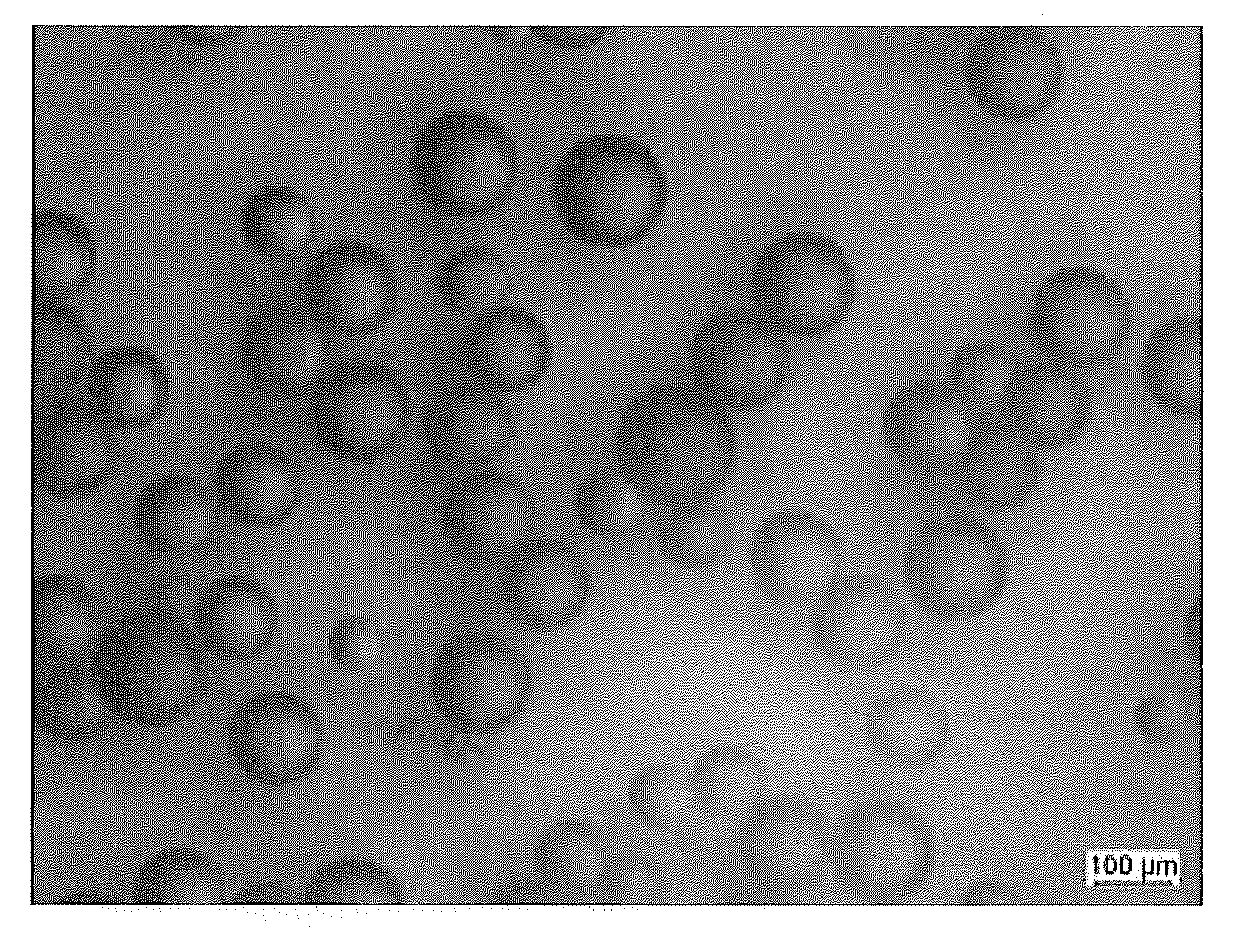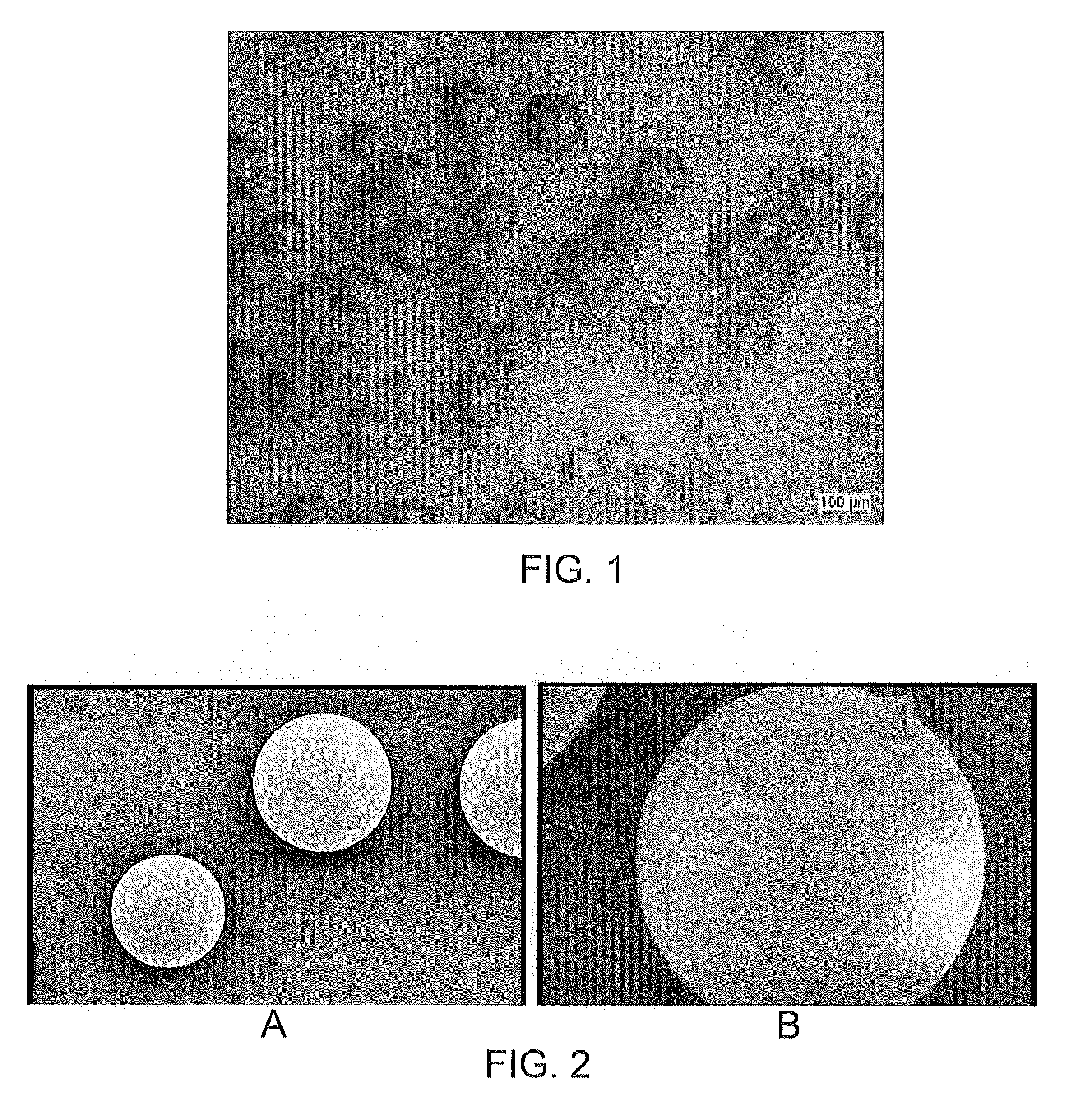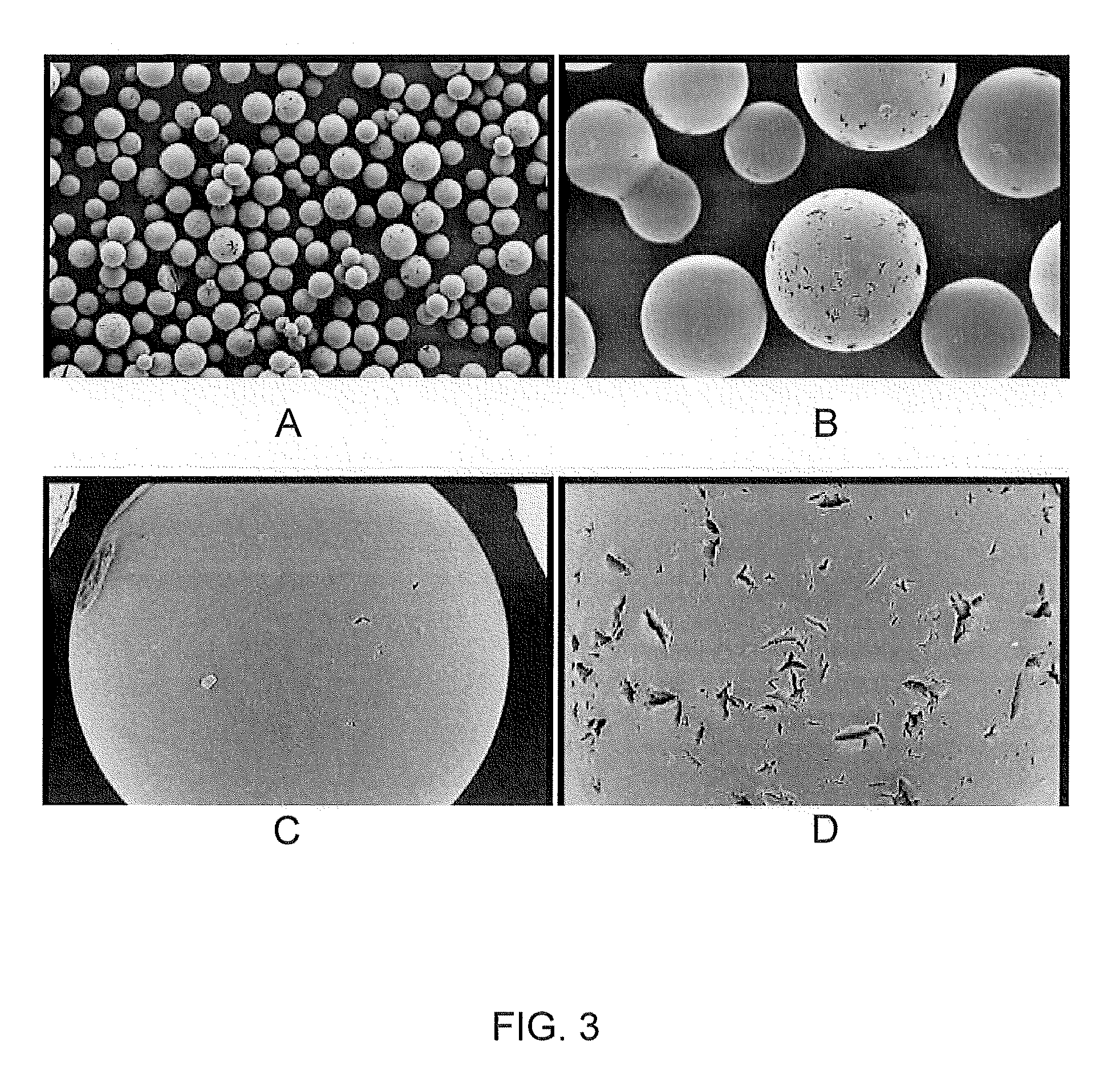Swellable synthetic microcarriers for culturing cells
- Summary
- Abstract
- Description
- Claims
- Application Information
AI Technical Summary
Benefits of technology
Problems solved by technology
Method used
Image
Examples
example 1
Microcarrier Preparation
[0116]250 grams of dry toluene and 15 grams of SPAN 85 emulsifier were charged in a 500 milliliter reactor equipped with a thermostatic jacket and bottom drain, dropping funnel, anchor stirrer and inert gas bubbling tube. The temperature of the reactor was set at 40° C. and the mixture was stirred at 500 rpm under argon bubbling for at least 15 min. Then a homogenous mixture containing 22 milliliter of deionized water, 6.3 grams of 2-hydroxyethyl methacrylate, 1.8 grams of 2-carboxyethyl acrylate sodium salt and 1 gram methylene bisacrylamide adjusted at pH 8-10 with NaOH was prepared. 0.5 grams of ammonium persulfate was dissolved in this aqueous solution until a clear and homogeneous solution was obtained. Then this solution was added dropwise by means of the dropping funnel to the stirred toluene / SPAN85 mixture at 40° C. The mixture turned milky rapidly due to the water-in-oil emulsion formation. After 15 min mixing, 100 microliters of tetramethylethylene ...
example 2
Assessment of COOH Content Using Crystal Violet
[0122]10 micrograms of dry microcarriers prepared according to Example 1 were suspended in 2 milliliters of deionized water and 10 microliters of 5% wt / v crystal violet aqueous solution was added. After sedimentation, the stained microcarriers were washed with deionized water until a colorless supernatant was obtained. The washed microcarriers were suspended in 2 milliliters deionized water. Uniform distribution of staining was observed (data not shown), suggesting that carboxyl groups were evenly distributed along the surface of the microcarriers.
example 3
Amine Coupling Assessed with Alexa Fluor™ 488 Coupling
[0123]10 micrograms of microcarriers prepared according to Example 1 were weighed in an Eppendorf plastic tube and 900 microliters of water was added to disperse the microcarriers by shaking. Then 100 microliters of 200 mM EDC and 50 mM NHS or Sulfo-NHS at was added. The activation was performed for 30 min. The microcarriers were rinsed with 1 ml deionized water after microcarrier sedimentation by centrifugation. Rinsing was repeated three times. Then the activated microcarriers were suspended in 400 microliters borate buffer pH 9.2 and 100 microliters of 1 mM Alexa Fluor™ 488 from Invitrogen Molecular Probes™ was added. After one hour coupling the microcarriers were collected by centrifugation and rinsed three times with PBS buffer.
[0124]Substantial fluorescence was observed with EDC / NHS and sulfo-EDC / NHS amine mediated coupling (data not shown), suggesting that either can be used to conjugate polypeptides to the surface of the ...
PUM
| Property | Measurement | Unit |
|---|---|---|
| Fraction | aaaaa | aaaaa |
| Percent by mass | aaaaa | aaaaa |
| Percent by mass | aaaaa | aaaaa |
Abstract
Description
Claims
Application Information
 Login to View More
Login to View More - R&D
- Intellectual Property
- Life Sciences
- Materials
- Tech Scout
- Unparalleled Data Quality
- Higher Quality Content
- 60% Fewer Hallucinations
Browse by: Latest US Patents, China's latest patents, Technical Efficacy Thesaurus, Application Domain, Technology Topic, Popular Technical Reports.
© 2025 PatSnap. All rights reserved.Legal|Privacy policy|Modern Slavery Act Transparency Statement|Sitemap|About US| Contact US: help@patsnap.com



